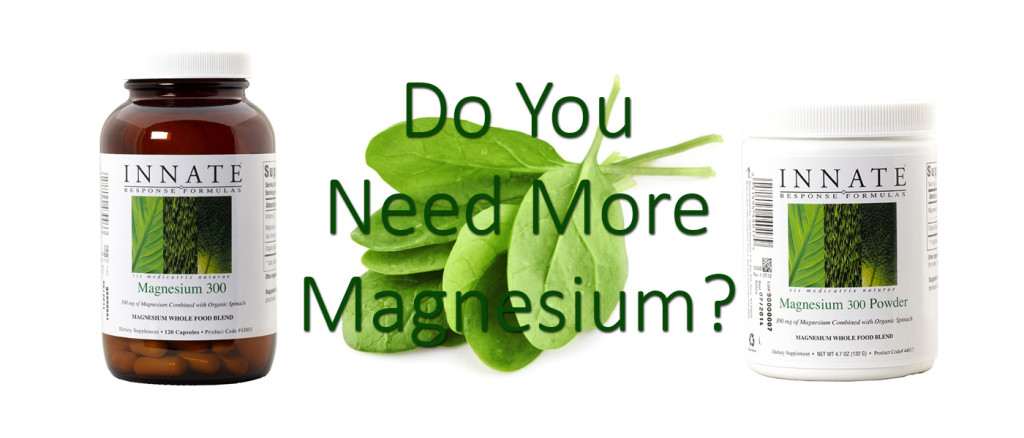By Sheila Landis, Nutritional Therapist
Stress, excess caffeine, and busy schedules are often the most obvious scapegoats for a poor night’s sleep, tense muscles and high blood pressure. But what if a mineral deficiency is the cause of these commonly experienced symptoms?
The good news is simply including some key foods in your patient’s diet to replenish magnesium, the anti-stress nutrient, may be helpful.
The need for calcium in reference to bone health is widely publicized but its essential balancing partner, magnesium is equally important. Calcium functions to constrict muscle tissues in the body, while magnesium enables relaxation. Adding magnesium through food or supplementation could be a key to more restful sleep, better focus, fewer muscle cramps and maintaining healthy blood pressure.*
Mineral deficiencies are prevalent in our time-crunched culture and eating is a grab and go event. Compounding the mineral deficiency challenges are farming practices that favor fertilizers over organic-mineral rich soils. While small amounts of nutrient deficient foods may be tolerated, a lifestyle of chronic stress, lack of sleep, medications and limited exercise may deplete the body of key minerals. If any of the symptoms below plague your patient’s daily routine, it might be time to expand their magnesium menu.
Symptoms associated with magnesium deficiency include:
- Constipation
- Depression
- Insulin Resistance
- Restless Leg Syndrome
- Muscle Cramps
- Insomnia
- High Blood Pressure
- Migraine Headaches
- Numbness or Tingling in Extremities
The Food Solution
Eating foods rich in magnesium is a healthy, risk free way to replenish this precious health aid. Here is a shopping list that includes some of the foods highest in magnesium.
Almonds and Cashews
Raw or sprouted, these nuts contain some of the highest levels of magnesium from a food source. A serving size is considered a small handful, approximately 12 to 15 nuts or a ¼ cup. Avoid roasted salted nuts as they can go rancid when exposed to high heat during roasting. Consider replacing dairy-based milk with a quality almond milk to add more magnesium while still preserving calcium.
Dark Chocolate (ideally raw cacao)
For patients who crave chocolate, they may be craving magnesium. Suggest modest indulgences of dark chocolate with 70% or higher dark cacao and low in sugar. For a cleaner option, suggest raw cacao powder to a protein shake for a “guilt-free” treat.
Leafy Greens
Swiss chard and spinach are among the highest in minerals and specifically magnesium. A great way to ensure a healthy dose daily is to add green drink to a morning routine. Whether juiced or blended, greens mixed with a few berries, some apple and a dash of lemon juice will infuse your patient’s day with sustained energy. A green powder is another easy way to get green nutrients into one’s diet.
Seeds
Pumpkin seeds, sunflower seeds, ground flax seeds and pine nuts are all excellent sources of a wide range of vitamins and minerals. They are a perfect afternoon go-to-snack in conjunction with a fresh piece of fruit.
Fish
Wild-caught fish packs a host of minerals and fatty acids in perfect balance with cofactors that allow assimilation of essential nutrients. Vitamin D and heart healthy Omega-3 fatty acids naturally blend with minerals to provide a functional and anti-inflammatory food that reduces inflammation. Suggest two servings a week of a high fatty fish, such as salmon, sardines or mackerel.
Sea Vegetables
These gifts from the sea are typically known for their iodine content, but also contain a rich source of minerals including magnesium, and potassium. Kelp flakes can be added to salads or steamed vegetables several days a week. Or cook a few extra vegetables the night before and wrap the leftovers in a Nori sheet for lunch.
Magnesium Supplements
Supplementation may be needed for patients with magnesium deficiencies and to support healthy levels of magnesium in the body. A whole food source is the optimum choice as it contain synergistic nutrients that provide a high level of bioavalability.
Defining and refining your patient’s diet to include these key foods to could head off symptoms and prevent health problems in the future.
This post is re-published with permission from Innate-Edu.





Speak Your Mind